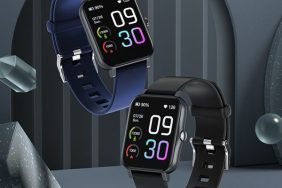
With CES 2015 in the tech industry’s rearview mirror, wearables stood as an unstoppable trend with smart watches emerging as a market cluttered with multiple players before the product has had time to establish itself.
Originally intended as part activity tracker and part “smartphone” on your wrist, the race is one to determine what features adapters most desire and at what price point. Industry leaders like Samsung made it to market early with the Gear, a watch that answers calls, takes photos by voice command and monitors activity. The Apple Watch will arrive this spring, promising to put a mini-iPhone on folks’ wrists.
But, while those big boys mark time, smaller tech companies are wrestling with when and where to move into the market.
META
The Texas and Finland-based Meta opted for fashion and comparable affordability over all-inclusive function with its M1. Sporting ample leather and metal, the M1 will keeps email alerts, text messages, weather reports and other updates handy without offering Dick Tracey like wrist communication. The M1 also sells for $50 less than the Samsung Gear.
CEO Bill Geiser said Meta watched what the industry trends from the bigger competition were and delivered something different.
“Mobile handset manufacturers (Apple, Samsung, Sony, Motorola, LG, etc.) all seem to agree on what a smartwatch is supposed to be — a color display, touch interface, app-driven functions and an experience of wearing a mini smartphone on the wrist,” Geiser said. “What we haven’t yet seen yet, but will eventually see over the next one to two years is the watch industry’s POV of what a smartwatch should be.”

BURG
Netherlands-based Burg smartwaches employ a SIM card, making the multifunction device a phone in an of itself — not relying on a Bluetooth connection to a separate device.
Burg marketing executive Steven Jay admits the companies muscling into the Smartwatch market don’t know all of the details what they want to offer and are still feeling out the terrain.
“I believe they’re a bit confused as to exactly what it will take to succeed in this new, red hot category,” Jay said. “They do not understand that it is going to take much more than a technical device to get people to wear a smartwatch in place of their traditional timepiece.”
“People wear watches because of the emotion they feel when wearing it. It’s a luxury item. But, technical smartwatches that are designed by technology people will never make it. Burg is a company that is composed of people with extensive technology, lifestyle design and traditional timepiece market experience.”
“The company understands that in order to capture new customers we will have to be both highly fashionable as well as technologically advanced,” Jay added.
Related: CES 2015: Self Driving Cars: Future or Gimmick?
But, with multibillion dollar companies already in the mix, and with Apple approaching, Meta and Burg had to decide where they wanted to land in the marketplace in terms of price point and features.
Geiger explained that Meta deduced many people wear watches as jewelry. And, in the centuries that people have been wearing jewelry, it comes in all shapes, sizes, price points, etc.
“This makes decisions regarding branding, sales channels, merchandising, advertising, etc very important,” he said. “Regarding the Meta M1, we anticipated most of the handset companies positioning their product as an electronic gadget. So, we decided to position the M1 as a premium product by leveraging higher quality materials and a unique design.”
By contrast, Jay said Burg moved toward producing wearable technology that “seamlessly integrates into your own unique lifestyle with simplicity and fun — that you will truly desire to wear.”
“Again, our background is in lifestyle design. From the start, our goal was to integrate technology into our design experience. Every aspect of our development process includes research into the latest advances in technology as well as consumer style trends.”
While deciding what your device would look like, what it would do and what segment of the wearable tech crowd it would target, Geiser wanted to target and partner David Rosales took their time.
“David and I have worn a smartwatch that we designed and built every day since mid 2005, which is longer than any of our competitors have been in this category. You learn a lot by using your own product.”
“We’ve learned there are certain things watches do better than phones. And there are certain things phones do better than watches. We only focus on those things watches do better. The goal is to create a product that delivers lasting value.”
“In terms of design, we worked with one of the world’s most successful designers – Frank Nuovo. Frank headed design for Nokia when they were on top, then founded Vertu, the luxury phone manufacturer.”
Jay explained that Burg looked first at current consumer style trends: “We then tasked our engineering team to come up with innovative, user friendly software and chip technology to ensure that we are at the cutting edge.”
“Our target market is very broad. For example our children’s watch simply makes phone calls and acts a a GPS tracking device so any parent can know exactly where their child is at anytime. But, our men’s watches are sportier — the women’s more colorful, fashionable and elegant. It’s always about creating a synergy between fashion and technology.”
Only time will tell if this market analysis and specific targeting protects Meta, Berg and other midsize smart watch makers from the onset of the Apple Watch.




